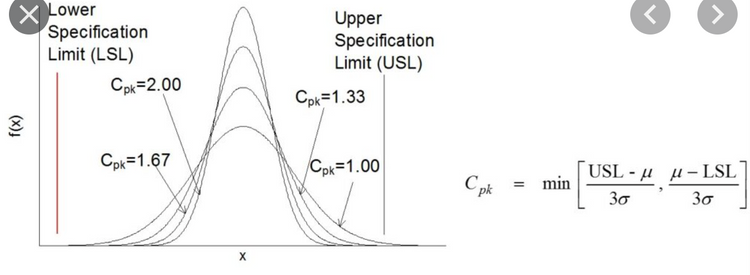Six Sigma - Gage R&R
The other common topic that I always get asked is Gage R&R.
What is Gage R&R?
Gage R&R is a formal analysis of measurement errors
Repeatability - if a single individual is consistent across repeated measurements of the same or identical items
Reproducibility - if the measurements are the same for different people measuring the same or identical items
Crossed and Nested Gage R&R


Nested Gage R&R is used when the act of testing a part destroys it. For example - testing airbag deployment. Nested Gage R&R does NOT suffer from the carryover effect. Disadvantage: you need more operators as the number of parts increases.
Carryover effect: experience gained by OP1 when measuring DUT1 affects the outcome of OP1 measuring DUT2


Accuracy v. Precision

Conducting a GRR Study

Reading GRR values:
In general:
<10%: acceptable
10%-30%: okay depending on application
>30%: unacceptable, too much measurement variation

This link showed me how to calculate GRR by hand:
Gage Repeatability and Reproducibility (R&R) | Six Sigma Study Guide
Gage Repeatability and Reproducibility is commonly referred to as Gage R&R. It’s a method that we can use to look at variability in our measurements.


